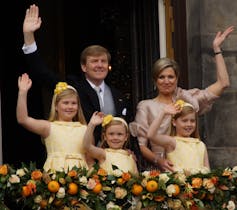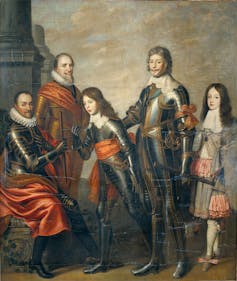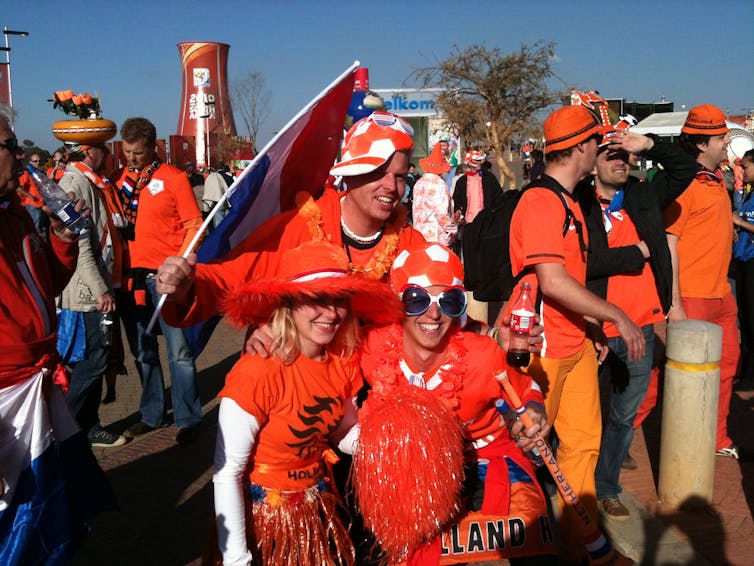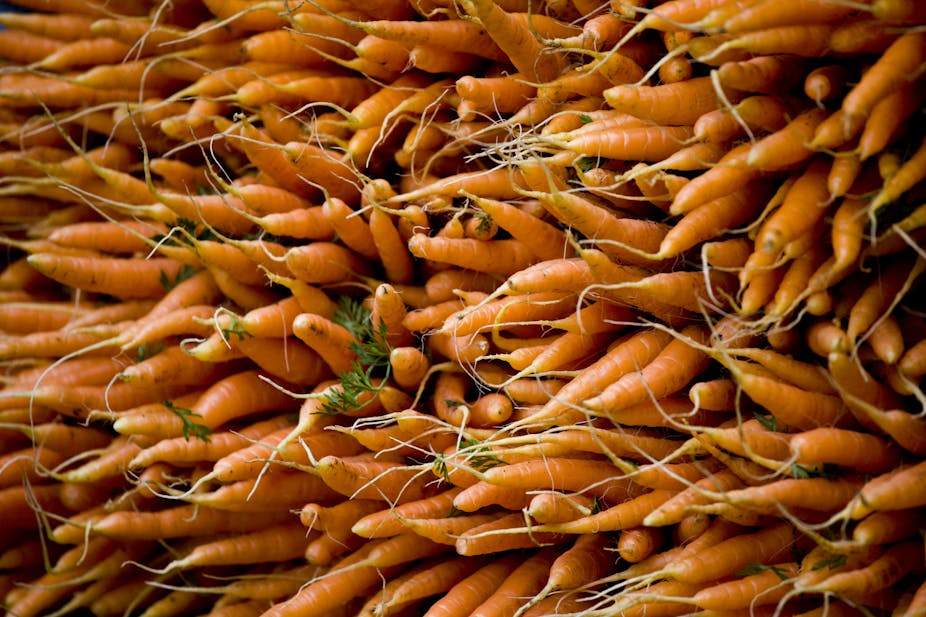Why are carrots orange?
They were bred orange in The Netherlands during the 17th century from the older white and purple stock (that are now back in fashion as “heritage” varieties) to show support for the Orange-Nassau dynasty.
The Orange-Nassau were the leading family of The Netherlands from the mid-16th century (and are now its royal family).

As the northern provinces of the Low Countries sought to break away from the Catholic Habsburg Philip II, who ruled from distant Spain, William of Orange-Nassau emerged as the only aristocrat with the power, influence and finances to lead them.
William and his family were to number among the leading Protestant families of Western Europe – although this didn’t stop a number of them from converting to Lutheranism or even Catholicism along the way.
In the lap of luxury
William of Orange and his sons might have been successful military and political leaders and the prominent faces of the dynasty – but its women were doing plenty to increase the family’s hold on power in other, equally visible, ways during the period.
After a 12-year truce had been signed with Spain in 1609, the Orange-Nassau dynasty entered a new phase of influence.

William’s son Frederick Henry and his wife Amalia von Solms created a different sort of power, presiding over an elegant courtly culture that was funded by a huge haul of gold from captured Spanish ships and imports from Dutch global trade.
Frederick Henry and Amalia set the trend for luxury, and they liked to show off those things to which they had exclusive access through the Dutch trading companies – the Dutch East India Company, established in the east in 1602, and the Dutch West India Company in the west in 1621.
Public relations: 17th-century style

The Nassau part of the dynasty’s name came from German lands where other branches were already influential. The Orange component was named after a town in southern France and it was this part, which identified their particular branch, which became a key tool in the dynasty’s strategic public relations.
The four daughters of Frederick Henry and Amalia, for example, all created new palaces and castles named after their family: Oranjewoud, Oranienstein, Oranienburg, and Oranienbaum. They even painted the buildings orange and planted orange trees in their gardens.
The glory of the Orange-Nassau family spread far and wide. Indeed, members of the dynasty became Kings of Prussia, England, Wales and Scotland well before they were invited in 1813 to become the monarchy of The Netherlands as well.
Fruit and veg brand marketing
So provocative were orange carrots seen to be in the early modern period that, at various points, they were banned from sale in Dutch markets as the fortunes of the dynasty waxed and waned politically.

If eating humble carrots was the way that the general public could show support for the family, exotic oranges were the dynasty’s own particular fruit for brand marketing.
Apart from the orange trees in gardens, Orange-Nassau princesses and their children were often painted holding oranges or orange blossoms in their hands.
They also prepared marmalade and candied fruits (using the luxury goods of orange peel and sugar) which were offered at the end of entertainments and balls, and given as exclusive gifts. Henrietta Catharina even set up a distillery for orange liqueur.
Orange politics

It is through the Orange-Nassau dynasty and its association with Protestant politics of early modern Europe that the colour gained its religious, political and Dutch associations.
The ships of the Dutch East India Company sailed around the world flying the Prince’s flag based on William’s livery of orange, white and blue.
It is now present in names and flags worldwide such as the Orange Free State in South Africa, the flags of New York and Ireland, as well as various forms of Orangist movements that have arisen. Even the town of Orange in country NSW is named after a Prince of Orange-Nassau.

And of course orange is still known as the sporting colour of the Dutch but, curiously, today’s Dutch flag is red, white and blue. The Dutch discovered early on that orange dye was unstable and so, ever practical, orange was changed to the vermilion red which is seen in the modern Dutch flag.
So humble vegetables and exotic fruit may also be political weapons. Something to think about next time you crunch on a carrot.

